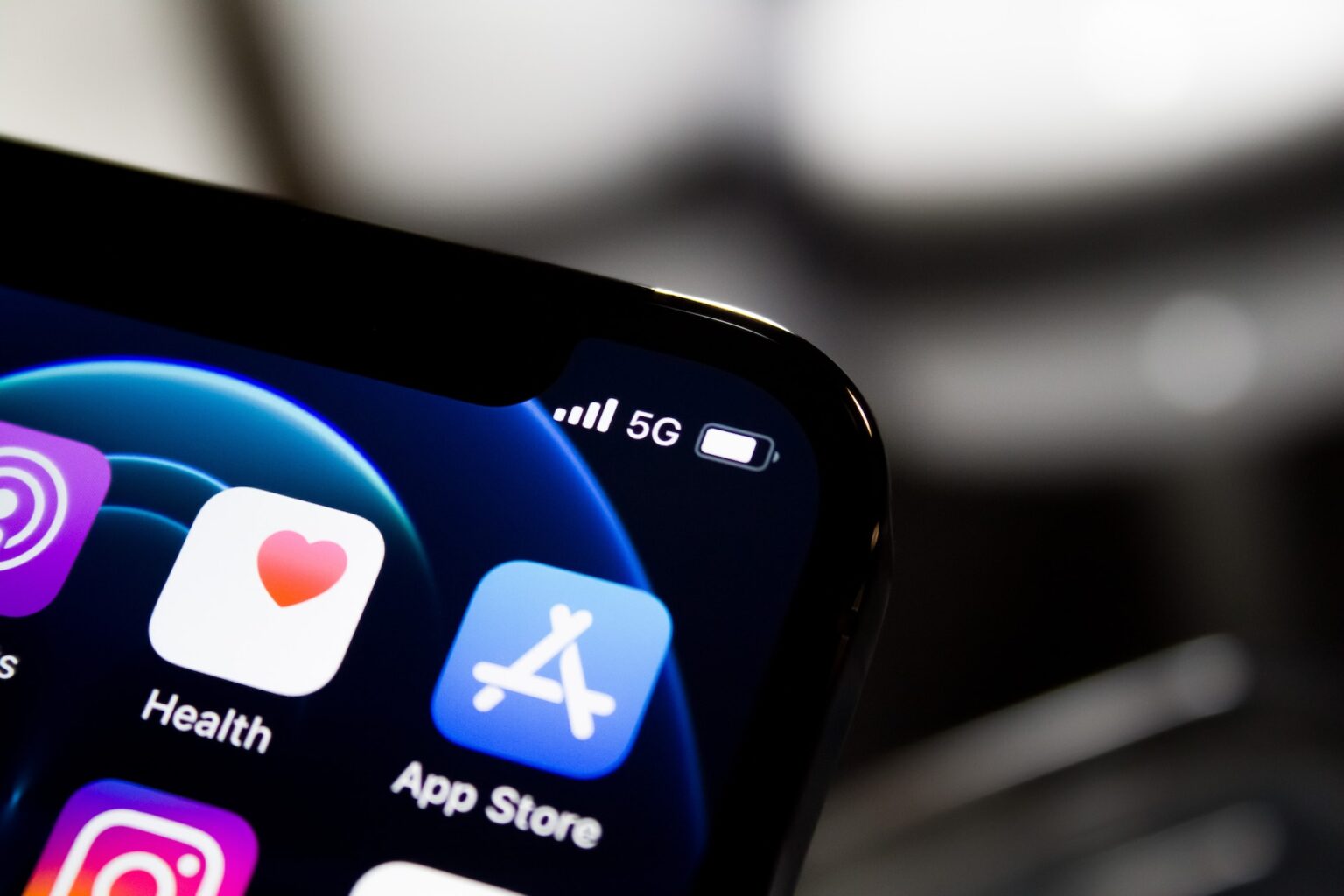5G technology is transforming the way we use mobile devices and IoT. With faster speeds, lower latency, and greater connectivity, the potential of 5G is enormous. Discover how 5G is shaping the future of mobile technology and what this means for businesses and consumers alike.
5G technology is the fifth generation of wireless technology, which offers faster speeds, lower latency, and greater connectivity than its predecessors. With speeds up to 100 times faster than 4G and latency as low as 1 millisecond, 5G technology has the potential to revolutionize the way we use mobile devices and IoT.
The Internet of Things, or IoT, is a rapidly growing network of interconnected devices and systems that are capable of exchanging data and communicating with each other over the internet. The concept of IoT involves embedding sensors, processors, and other types of technology into everyday objects, from appliances and vehicles to industrial machinery and even clothing. These connected devices can collect and share data, enabling them to make intelligent decisions and automate various tasks. With the proliferation of IoT, the world is becoming more interconnected than ever before, leading to new levels of efficiency, productivity, and convenience. In this introduction to IoT, we will explore the concept of IoT, its benefits, and some of the challenges and considerations associated with its implementation.
Key features of 5G technology:
- Speed: 5G technology provides faster download and upload speeds than 4G technology. In fact, 5G speeds can be up to 100 times faster than 4G speeds, enabling faster data transfer, streaming, and browsing.
- Latency: 5G technology offers lower latency than 4G technology. Latency refers to the delay between sending a request and receiving a response. With 5G, latency can be as low as 1 millisecond, which is significantly lower than the latency of 4G technology.
- Connectivity: 5G technology provides greater connectivity than 4G technology. This means that more devices can be connected to the network simultaneously, which is important for IoT devices that require a large number of connected devices to function properly.
To achieve these features, 5G technology uses a combination of technologies, including:
- Millimeter waves: 5G technology uses higher-frequency millimeter waves to transmit data, which allows for faster speeds and lower latency.
- Small cells: 5G networks use smaller cells, which are located closer together than the cells used in 4G networks.
- This allows for greater connectivity and faster data transfer.
- Massive MIMO: 5G networks use massive MIMO (multiple input, multiple output) technology, which allows for multiple antennas to be used simultaneously to increase capacity and improve data transfer speeds
Advantages of 5G Technology for Mobile Devices
There are several advantages of 5G technology for mobile devices. Here are some of the key advantages:
- Faster speeds: 5G technology provides faster download and upload speeds than 4G technology. This means that you can download and upload data much faster on your mobile devices, enabling faster browsing, streaming, and data transfer.
- Lower latency: 5G technology offers lower latency than 4G technology. This means that there is less delay between sending a request and receiving a response, resulting in a more responsive and smoother experience on your mobile devices.
- Improved video streaming: 5G technology enables high-quality video streaming on mobile devices. With 5G, you can stream 4K and even 8K videos on your mobile device without buffering or lag.
- Enhanced AR/VR experiences: 5G technology enables more immersive augmented reality (AR) and virtual reality (VR) experiences on mobile devices. With faster speeds and lower latency, AR and VR apps can perform better and provide a more realistic experience.
- Better gaming experience: 5G technology offers faster speeds and lower latency, which translates to a better gaming experience on mobile devices. With 5G, you can play online games without lag or delay.
- More reliable connectivity: 5G technology provides greater connectivity than 4G technology. This means that you are less likely to experience dropped calls or lost connections on your mobile devices.
Impact of 5G on IoT and Smart Devices
The impact of 5G on IoT and smart devices is significant, as 5G technology provides faster speeds, lower latency, and greater connectivity, enabling more efficient and effective communication between devices. Here are some of the key impacts of 5G on IoT and smart devices:
- More connected devices: 5G technology provides greater connectivity than 4G technology, allowing more devices to be connected to the network simultaneously. This means that more IoT devices can be connected to the network, enabling more efficient communication and data transfer between devices.
- Improved data transfer: With faster speeds and lower latency, 5G technology enables faster and more efficient data transfer between IoT devices. This means that devices can communicate more quickly and accurately, enabling faster decision-making and more efficient operations.
- Real-time monitoring: With lower latency, 5G technology enables real-time monitoring of IoT devices. This means that data can be collected and analyzed in real-time, enabling more accurate and timely decision-making.
- Enhanced automation: 5G technology enables enhanced automation in IoT and smart devices. With faster speeds and lower latency, devices can communicate more efficiently and accurately, enabling greater automation and more efficient operations.
Increased efficiency: With faster speeds, lower latency, and greater connectivity, 5G technology can enable greater efficiency in IoT and smart devices. This can lead to reduced costs, improved productivity, and more efficient use of resources. - Applications of 5G Technology in Various Industries
- 5G technology has the potential to revolutionize various industries by enabling faster speeds, lower latency, and greater connectivity. Here are some of the key applications of 5G technology in various industries:
- Healthcare: 5G technology can enable remote patient monitoring, telemedicine, and real-time collaboration between healthcare professionals. This can improve access to healthcare services and reduce costs.
- Manufacturing: 5G technology can enable greater automation, real-time monitoring of production processes, and remote maintenance of equipment. This can lead to improved productivity, reduced downtime, and greater efficiency.
- Transportation: 5G technology can enable connected vehicles, real-time traffic management, and remote monitoring of vehicle performance. This can improve safety, reduce congestion, and improve overall transportation efficiency.
- Retail: 5G technology can enable real-time inventory management, personalized shopping experiences, and enhanced mobile payments. This can improve customer satisfaction and increase sales.
- Entertainment: 5G technology can enable high-quality streaming, immersive augmented and virtual reality experiences, and real-time gaming. This can enhance the overall entertainment experience and drive new revenue streams.
- Education: 5G technology can enable remote learning, virtual classrooms, and real-time collaboration between students and teachers. This can improve access to education and reduce costs.
- Energy: 5G technology can enable real-time monitoring of energy usage, remote management of energy infrastructure, and improved grid efficiency. This can reduce costs and improve sustainability.
Future of 5G Technology and Its Implications for Mobile Technology
The future of 5G technology is bright, and it is expected to have a significant impact on mobile technology. Here are some of the key implications of 5G for mobile technology:
- Increased speed: With faster speeds, 5G technology can enable more advanced applications, such as high-quality streaming, augmented and virtual reality experiences, and real-time gaming.
- Greater connectivity: With greater connectivity, 5G technology can enable more devices to be connected to the network simultaneously, enabling more efficient and effective communication between devices.
- Lower latency: With lower latency, 5G technology can enable real-time communication and faster decision-making, enabling greater efficiency and productivity.
- New applications: 5G technology can enable new applications and use cases that were previously not possible with 4G technology, such as autonomous vehicles, remote surgery, and smart cities.
- Improved security: With greater connectivity and more devices connected to the network, 5G technology will require improved security measures to ensure the protection of personal data and prevent cyber attacks.
- Infrastructure development: The rollout of 5G technology will require significant infrastructure development, including the installation of new base stations and fiber optic cables, which could lead to new jobs and economic growth.
- More efficient network usage: 5G technology can enable more efficient network usage by allowing for greater device-to-device communication, reducing the need for data to travel back and forth to central servers. This can help reduce network congestion and improve overall network performance.
Conclusion:
The revolutionary 5G technology is set to transform the world of mobile devices and the Internet of Things (IoT) in unprecedented ways. With its incredibly fast data transfer speeds, low latency, and increased capacity, 5G will enable new applications and use cases that were previously unimaginable. From autonomous vehicles to smart cities and virtual reality experiences, the possibilities for 5G are limitless.
As 5G continues to roll out across the globe, it will pave the way for the next generation of innovation and advancement in technology. The impact of 5G will be felt across industries, enabling businesses and individuals to work, connect, and communicate in entirely new ways. The combination of 5G and IoT will create a truly connected world, where devices and systems can seamlessly communicate with each other, opening up a whole new world of possibilities for automation, efficiency, and productivity.


